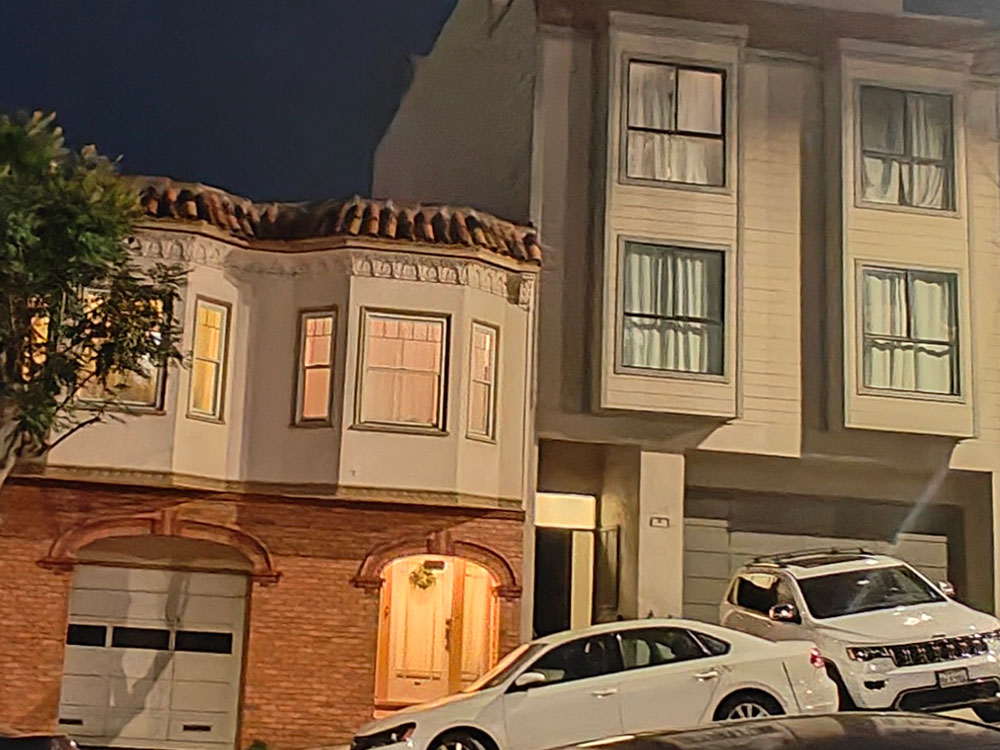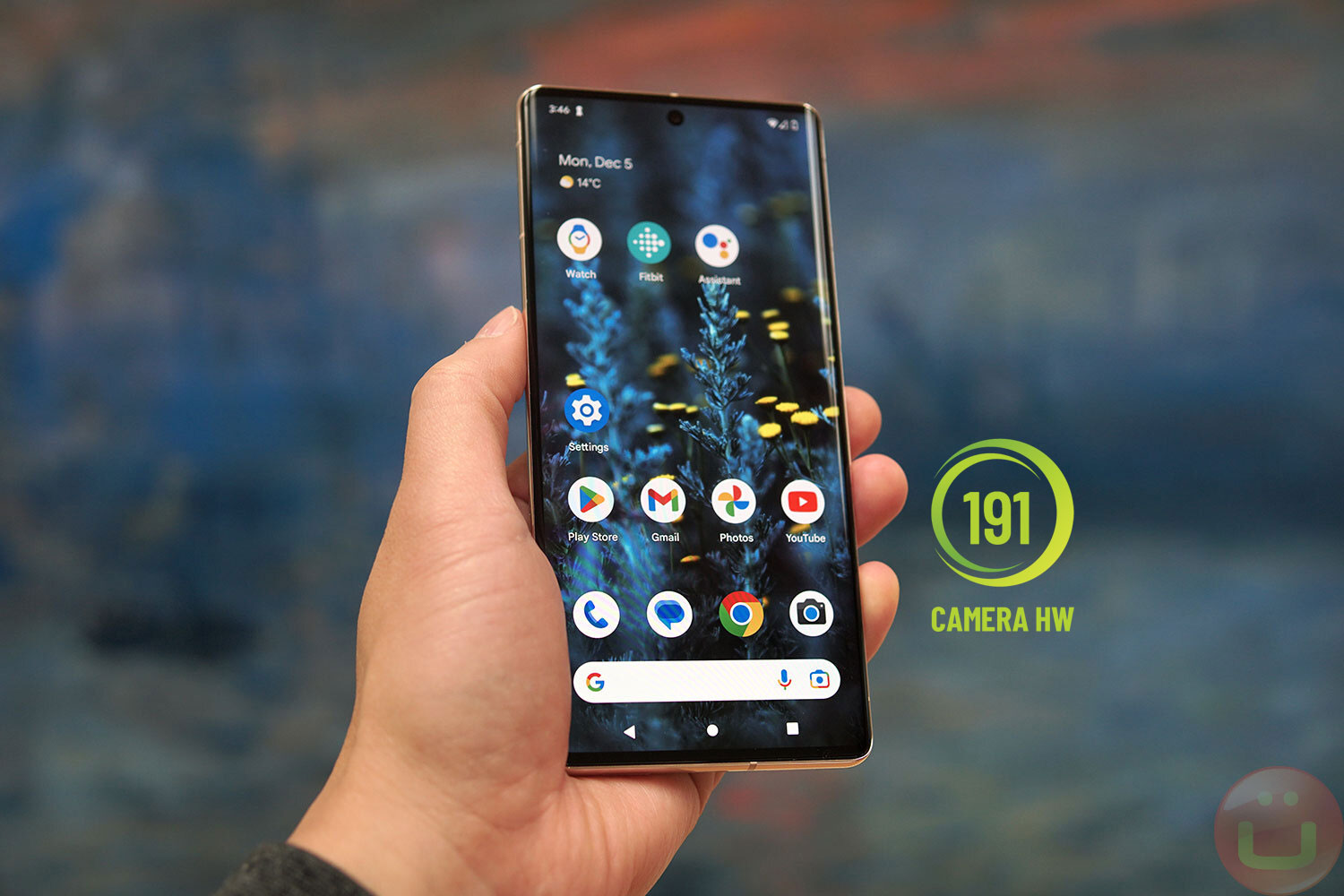
The new Google Pixel 7 Pro is a refinement of the successful Pixel 6 Pro redesign that brought massive changes, notably on the camera hardware front. This Pixel 7 Pro iteration is not as groundbreaking, and Google has chosen to incrementally improve some aspects of the new phone design and experience.
Our specific Google ixel 7 Pro is an AT&T unit, so it is optimized for their 5G network while being largely compatible with various networks worldwide if you have to roam. It is also pre-loaded with unique AT&T apps such as the AT&T Cloud, Call Protect, and the myAT&T portal app.
Pixel 7 Pro Design
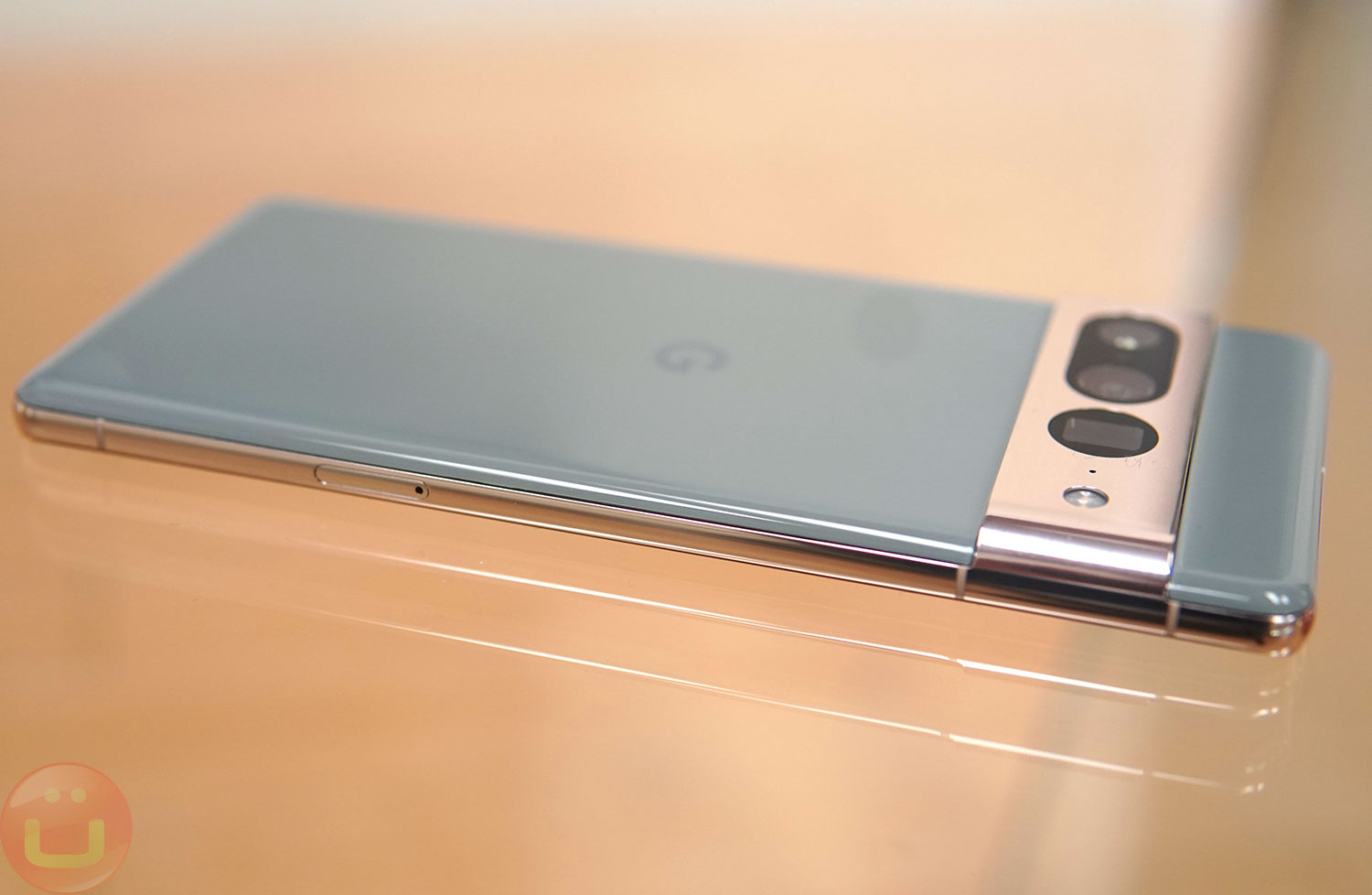
While the general design language remains faithful to the Pixel 6 Pro’s, Google did a great job relooking the Pixel Pro 7 to make it look more “premium,” in our opinion. The color accents and the chrome camera bar make it more expensive-looking than its predecessor.
"MORE EXPENSIVE-LOOKING THAN ITS PREDECESSOR"This updated design is an excellent example of how Design can bring immediate value to a product, and that’s why it’s so crucial in the overall identity and marketing of the phone. From a pure build quality perspective, a phone like the Samsung Galaxy S23 UItra still looks more luxurious but is also significantly pricier.
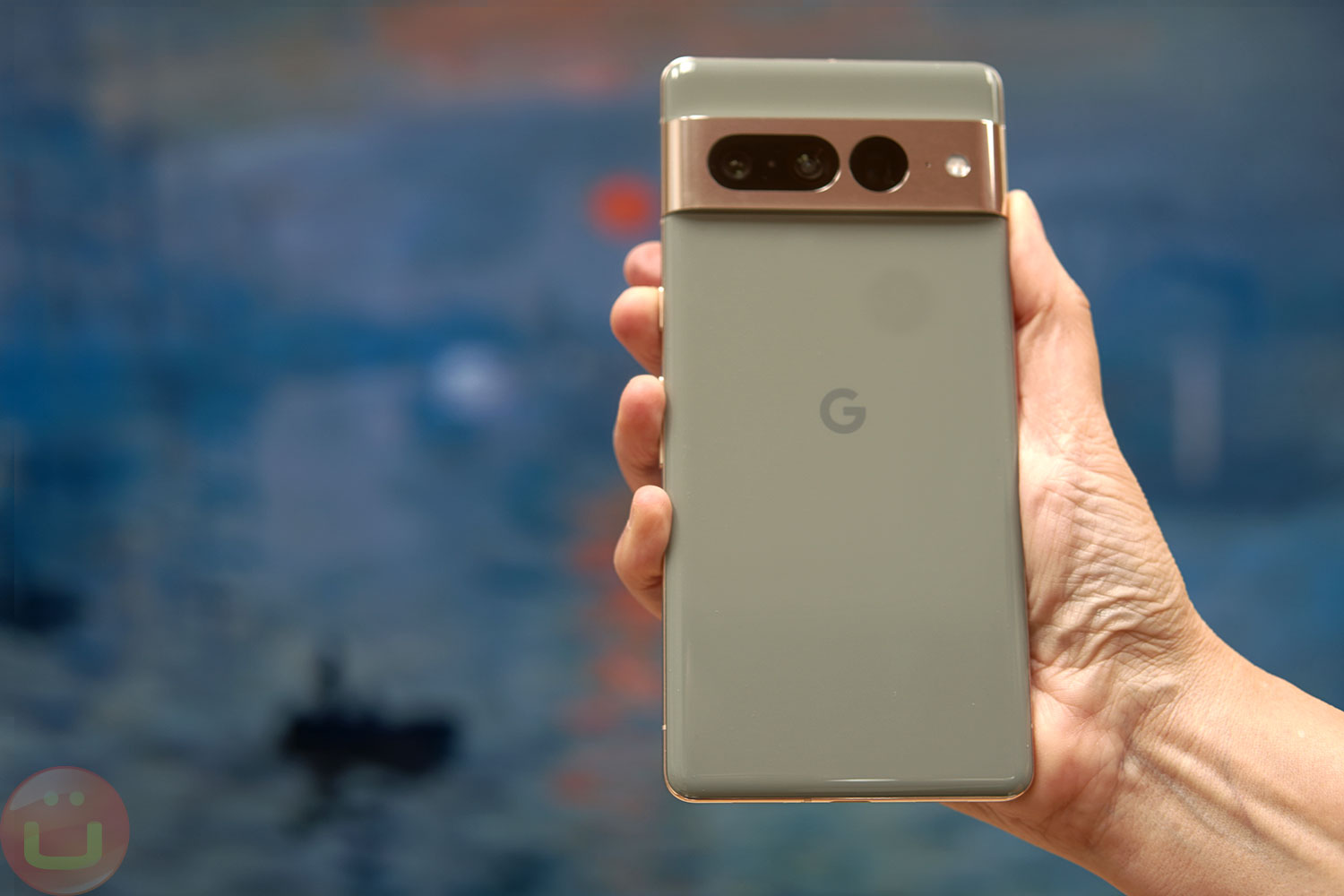
The Pixel 7 Pro camera bar stirred some controversy and even unwarranted mockery in the past. We don’t see this bar as an issue: it confers a unique and recognizable identity to the recent Pixel phones. We’ll see later why the bar contributes to better photo quality, and that’s its reason for being.
The Pixel 7 Pro is agreeable to hold in my hand and feels great. Some people don’t like rounded corners, but I’m not one of them. The Power and Volume buttons are to the phone’s right, with Power at the top, different from OEMs like Samsung. It didn’t bother me.
During our testing, we noticed that this handset is extremely slippery and will tend to slide down and fall off the table due to the minute but continuous vibrations induced by keyboard typing. Curved phones are prone to doing this, and the Pixel 7 Pro is one of them.
If the phone happens to land in water, its IP68 waterproof certification should help it survive that encounter. Please don’t leave it in there for too long, though!
Pixel 7 Pro sound quality
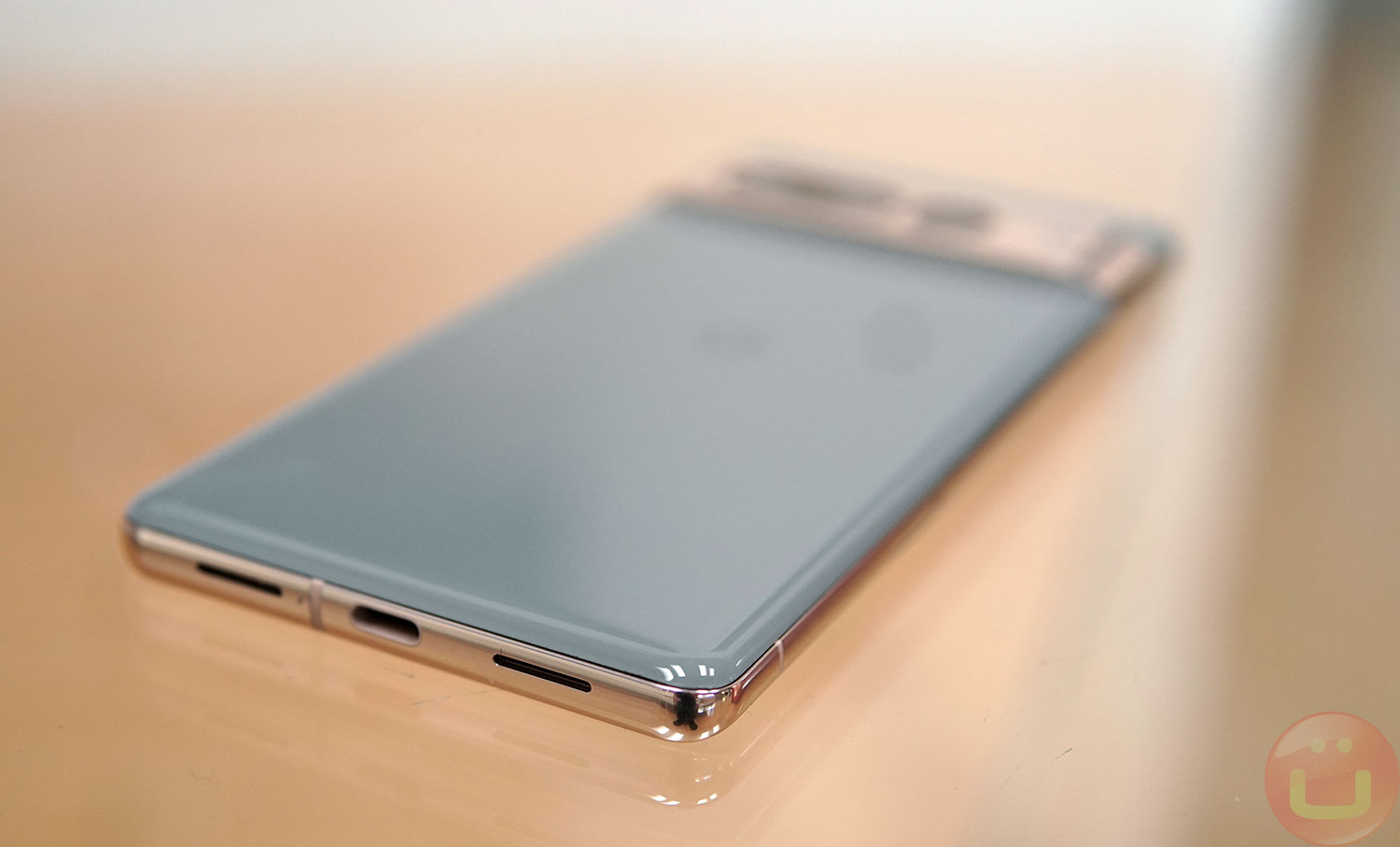
This smartphone’s speaker offers good sound quality, and using it in speaker mode is undoubtedly enjoyable. Compared to other “famous” phones like the iPhone 14 Pro, it slightly lacks power and bass compared to the best. These are the primary audio properties we’d like to see improved a little, but other than that, we’re happy with the experience.
Display
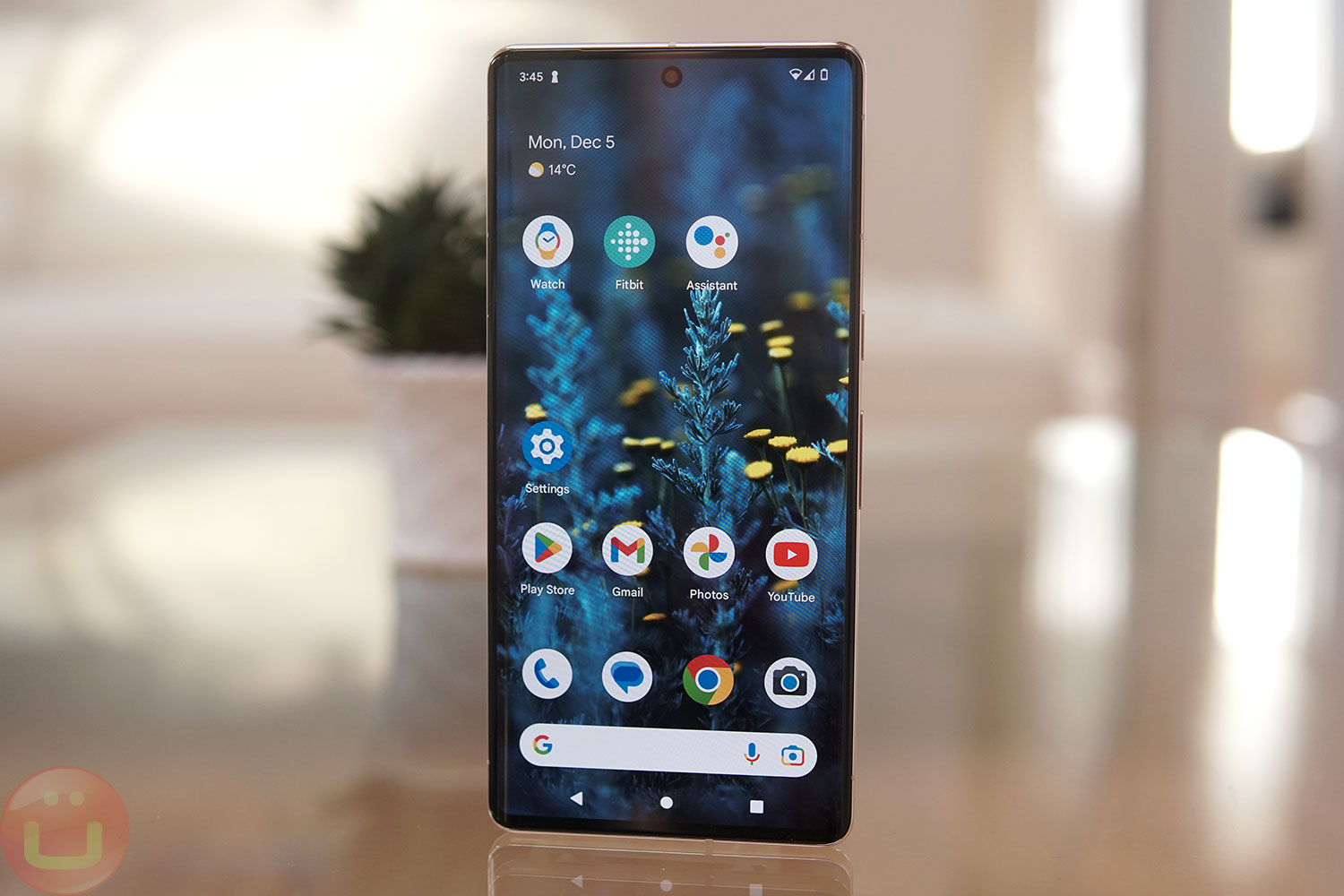
The Pixel 7 Pro has an excellent 6.71″ OLED display. Its size and 3120×1440 resolution make it one of the sharpest mobile displays with 512 PPI (pixel-per-inch), slightly higher than the S23 Ultra and the iPhone 14 Pro Max.
Its 1400 NITs theoretical peak brightness ensures the display is readable even in extremely bright outdoor situations. That’s 25% higher brightness than the Pixel 6 Pro. In our tests, we easily reached 1040 NITs, which is more than sufficient to make the display legible in all conditions.
The phone is set to render at 1080P resolution internally out of the box, so change the setting if you want maximum sharpness. When viewing photos, that’s amazing.
"AN EXCELLENT 6.71-INCH 120HZ OLED DISPLAY"The display’s refresh rate is 120Hz, and since it uses LTPO technology, the rate can vary between 10Hz to 120Hz, which should use less power.
There’s an optical fingerprint reader underneath the display, and while it’s not as fancy and discrete as the ultrasonic readers, it works very well. Alternatively, you can also use the selfie face unlock, which is not as secure as fingerprints. Payment apps actually require a fingerprint.
Pixel 7 Pro Camera
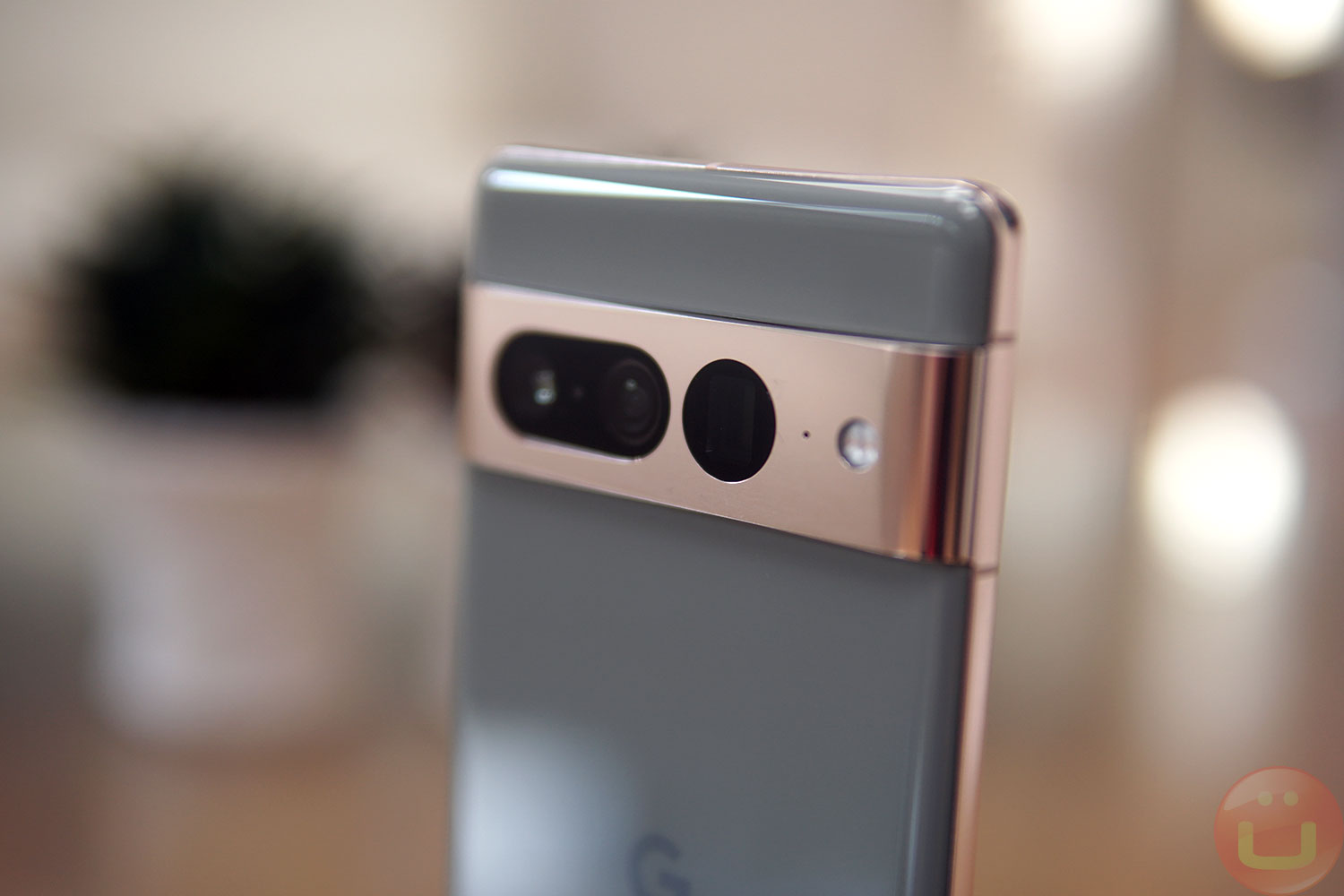
The Google Pixel 7 Pro has three rear cameras and one selfie camera, as follows:
Rear camera
- 24mm 50-MP f/1.85 Wide (Primary), with OIS
- 13mm 12-MP f/2.20 Ultrawide
- 117mm 48-MP f/3.50 “5X Zoom”, with OIS
Selfie camera
- 21mm 10.8-MP f/2.2
The camera bar is essential in providing additional thickness to accomodate high-performance camera modules. Larger sensors typically require more depth, and it was clear that Google urgently needed to upgrade its Pixel 5 camera hardware, as we pointed out in our Pixel 5 Camera review.
Unlike what many industry players claim, objective image quality growth has been primarily fueled by better camera hardware across all brands, as captured by Ubergizmo’s CAMERA HW benchmark. We’ve proven that by looking at over a decade of Samsung and Huawei camera data.
Google came back as a significant camera player because the Pixel 6 Pro was given a major camera hardware upgrade.
"LARGELY COMPARABLE TO THE GOOGLE PIXEL 6 PRO CAMERA"Whether in day or night conditions, the Primary camera of the Google Pixel 7 Pro delivers very good photos that capture what your eyes see with good fidelity. Google has its unique Color and Contrast tuning “style,” and many like that very much, while others prefer neutral (less processed) photos. The aesthetics are different from the objective image quality.
Overall, the Pixel 7 Pro camera is largely comparable to the Google Pixel 6 Pro camera, and the primary camera module is identical. However, there are underlying differences that are worth pointing out.


The Pixel 7 Pro has a slightly better 117mm zoom camera when compared to the 6 Pro’s 104mm zoom camera. I don’t think the gap between these two telephoto cameras would be enough to justify an upgrade, but it does make zoom photos slightly better.
The Ultrawide camera of the Pixel 7 Pro is decent, but it’s important to realize that other OEMs have decided to invest even more in better ultrawide camera hardware. The OnePlus 11 Pro is a good example of that, and today, no amount of software, AI, or processing can close the gap.
The 16mm Ultrawide camera of the Pixel 6 Pro offers higher image quality (and lower noise levels) than the 13mm Ultrawide camera of the Pixel 7 Pro. That difference is a typical tradeoff, as the “wider” the angle is, the lower the image quality (with everything else equal, like sensor size and type). In return, you can capture a noticeably more expansive field of view.
These differences explain why the CAMERA HW score of the Pixel 7 Pro is slightly inferior to the Pixel 6 Pro. It’s a very small difference, but a difference nonetheless.
Google Pixel phone fans (#teampixel) will appreciate the overall high-quality camera experience, including the subjective image tuning that Google is known for. Typically, people are satisfied with the auto-mode settings and feel like Google is adding saturation and contrast and handles HDR in a way that makes their photo look good, even though the result might deviate a bit from reality.
There’s support for 4K/60Hz video recording from all cameras, but I recommend using 4K/30Hz HDR video recording, especially in high-contrast situations like sunsets, etc. There’s also a 24FPS Cinematic video mode with an artificial Bokeh background blur for which you can change the focus point.
Performance
The Google Pixel 7 Pro is powered by Google’s Tensor G2 processor (SoC), manufactured using a 5-nanometer semiconductor process.
As you’ll see in the benchmarks, Google’s priority with the Tensor chips is not pure speed, but it is that “your phone needs to understand your world,” and Google hopes to achieve that with a custom AI sub-unit within the chip.
Both the CPU and graphics benchmarks clearly show that competitors can handily outpace the Pixel 7 Pro in pure CPU computing and gaming benchmarks. It could be better, but most users don’t need the absolute highest performance, so interpret these numbers with pragmatism.


Perhaps as important, the performance/price ratio of the Google Pixel 7 Pro is very reasonable compared to phones like the S23 Ultra, at least when CPU speed is concerned. However, expect speed-focused (gaming) phones to offer a higher value, because other hardware platforms have significantly faster graphics.


For that, Google’s Pixel 7 (non-pro) offers amazing value, but that’s for another review. The game-oriented OnePlus 10T, or even the new OnePlus 11 do come to mind when talking about value.
For heavy users, Google has integrated 12GB of RAM, and that memory will help keep the phone running smoothly even if you like having tons of apps. If you want to install lots of apps, this is even more important than processor speed.
Battery

One of the main selling points of Google’s Tensor G2 processor was its power efficiency. We assumed we would get an exceptional battery life when paired with the 5000 mAh battery.
Unfortunately, we did not see remarkable real-world battery life. We expect most users to have a full day’s battery, but “beyond 24-hour battery life” seems very unlikely without tweaking battery settings and display resolution.
We’re not quite sure where the power is going, and it could be the radio communications, display refresh, or power management, which are not optimum. Hopefully, some of it can be improved via an OTA update.
When it’s time to charge, you can use the official Google 30W charger to be certain to reach the maximum charge speed of 23W supported by the phone. We didn’t have one, so we used the EZQuest UltimatePower 90W charger.

During our tests, we noticed the charging peaked at 22W and hovered between 20W-22W. In 30mn the battery went up by 39%. Google claims the battery charging can go from 0% to 50% in 30mn when using the Google 30W charger, which makes sense.
That’s significantly faster replenishing (in mAh/mn) than an iPhone 14, for example, but it’s not really groundbreaking by android standards, and phones such as the OnePlus 10T do charge 4.5X faster.
Conclusion
The Google Pixel 7 lives up to its fans’ expectations and delivers a good update with incremental improvements over the Pixel 6 Pro. If you already own a Pixel 6 Pro, it’s not an obvious upgrade (we recommend waiting), but coming from a Pixel 6a, Pixel 5, and below, we can warmly recommend this phone if you want the best Google Pixel phone on the market.
From a camera perspective, we really appreciate Google’s great efforts in upgrading its hardware from Pixel 6 Pro onwards. This is one of the best camera phones on the market at this price level. There are slightly stronger options if you’re willing to pay a higher price (Galaxy S23 Ultra, iPhone 14 Pro, etc.).
"A GOOD UPDATE WITH INCREMENTAL IMPROVEMENTS"In conclusion, the Google Pixel 7 Pro is a very good Android phone, and we expect it to attract users that enjoy Google’s software features (like “no bloatware”) and Google’s subjective camera tuning (“style”). Other users have ample choices, from Xiaomi, OnePlus, and Samsung, for example.
Google Pixel 7 Pro at AT&T or via Google. Check the official sites for discounts and promos.
Filed in . Read more about Android, Google and Smartphone Reviews.










